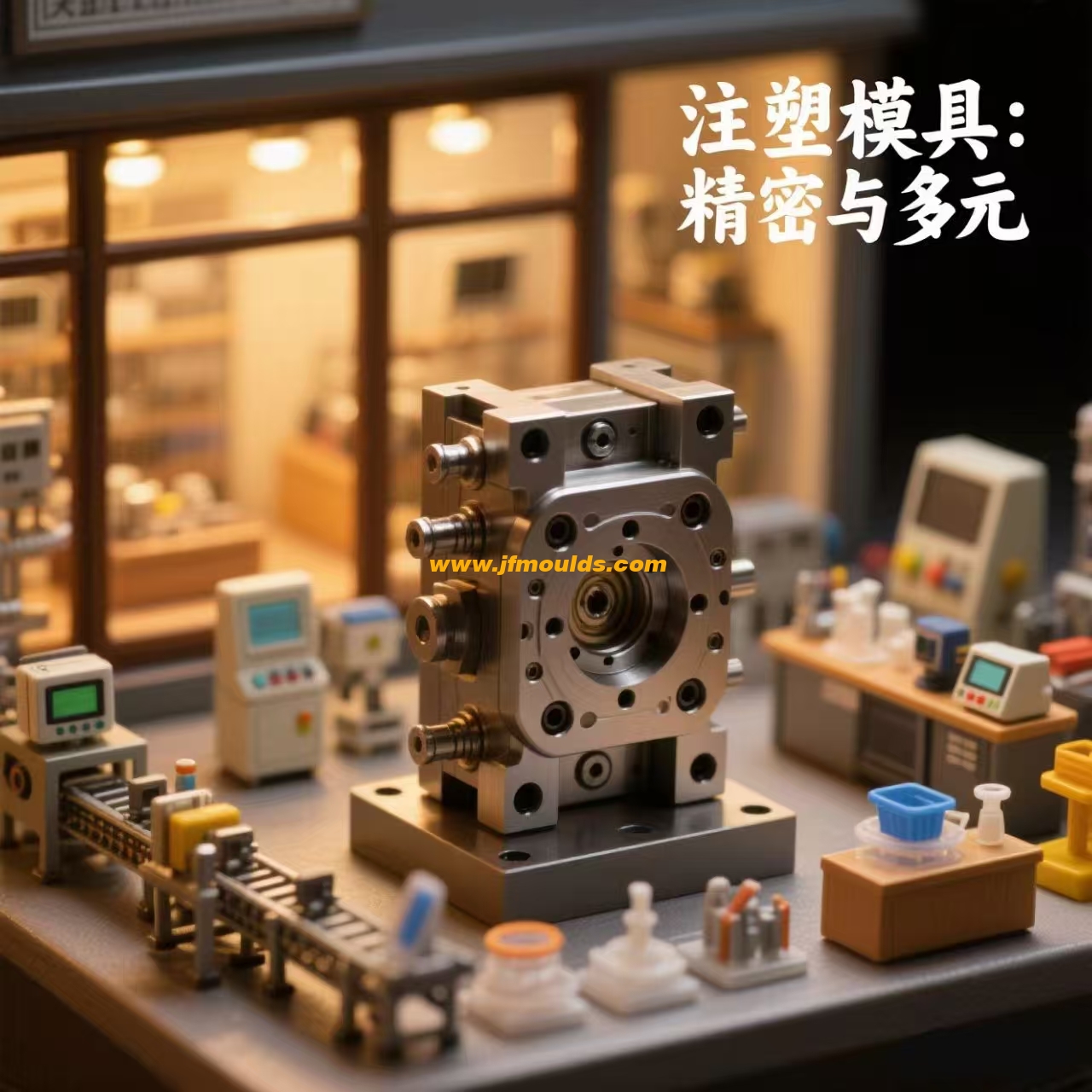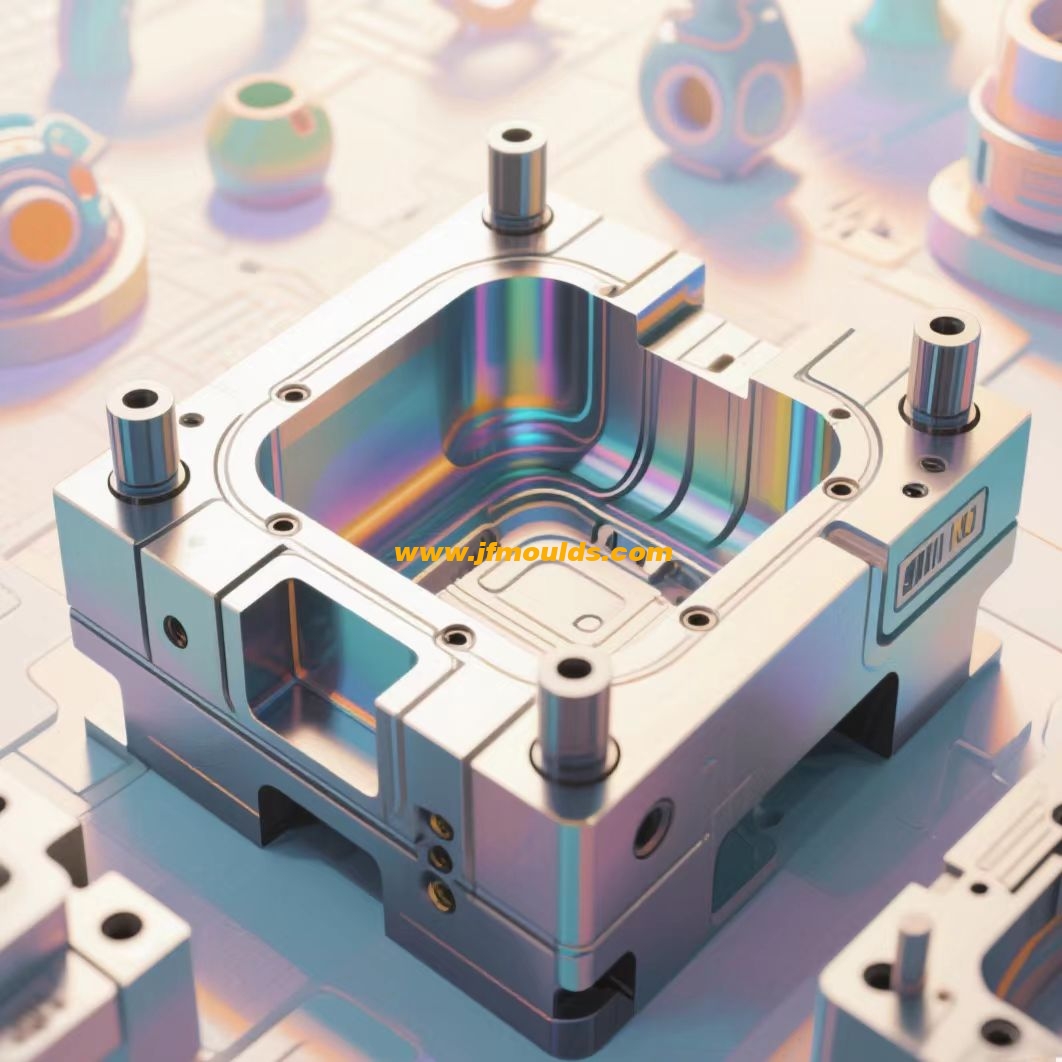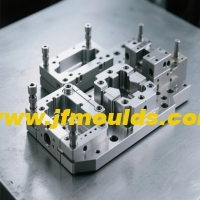Injection Molds: A Comprehensive Analysis from Precision Craftsmanship to Diverse Applications
Injection Molds: A Comprehensive Analysis from Precision Craftsmanship to Diverse Applications
In the vast system of modern manufacturing, injection molds can be regarded as the "unsung heroes" in the molding of plastic products. Based on precise craftsmanship and with diverse design and manufacturing methods, it is widely applied in various fields and profoundly influences people's production and life. This article will conduct a comprehensive analysis of injection molds from aspects such as process principles, core processes, cutting-edge technologies, and multi-field applications.
1. Principles and Core Processes of Injection Mold Technology
(1) Process Principle
The working principle of injection molds is based on the thermoplastic properties of plastics. Granular or powdered plastic raw materials are sent into the barrel of the injection molding machine through the hopper, and the plastic is heated to a molten state through the heating device. Under the push of the screw, molten plastic is injected into the mold cavity at high pressure and high speed, filling every corner of the mold. Subsequently, the mold rapidly cools down under the action of the cooling system, and the plastic melt solidifies and takes shape. Finally, the formed plastic product is pushed out of the mold through the demolding mechanism, completing one injection molding process. Throughout the entire process, as the "container" for forming, the structural design and manufacturing accuracy of the mold directly determine the quality of the product and the production efficiency.
(2) Core Manufacturing Process
1. Design stage:
This is the starting point of injection mold production. Designers need to conduct 3D modeling and structural design by using professional software such as CAD/CAM/CAE based on the functional requirements, appearance design and size specifications of the product. During the design process, factors such as the selection of parting surfaces, gate positions, layout of the runner system, and design of cooling waterways need to be comprehensively considered. For example, the determination of the gate position should avoid defects such as weld marks and cavitation during plastic filling. The design of the cooling waterway needs to ensure uniform cooling of the mold and shorten the molding cycle. Meanwhile, the quality of the "injection mold design plan" will affect the difficulty of subsequent processing and the service life of the mold. An excellent design plan can achieve efficient production and low-cost maintenance.
2. Material selection:
The performance of mold materials is crucial to the quality and service life of the mold. Common mold materials include carbon tool steel (such as T8-T12), alloy tool steel (such as 42CrMo, Cr12MoV), etc. Carbon tool steel is relatively inexpensive. After heat treatment, it has a certain hardness, but its wear resistance and hardenability are poor. It is suitable for simple molds with low precision requirements. 42CrMo is a commonly used material for CNC bending machine molds at present. It features high strength, high toughness and good hardenability, and can operate at temperatures below 500℃, meeting the requirements of high-precision molds. Cr12MoV cold work die steel has excellent comprehensive mechanical properties and is suitable for manufacturing molds with complex shapes, high precision and frequent use, but its cost is relatively high.
3. Processing and manufacturing:
CNC processing equipment (such as CNC milling machines, electrical discharge machines, CNC grinding machines, etc.) is used to process the mold components. The processing procedure covers rough machining, semi-finish machining and finish machining to ensure the dimensional accuracy and surface quality of the components. For complex mold structures, it is often necessary to combine special processing techniques such as electrical discharge machining and wire cutting. For instance, for some molds with fine patterns or inverted structures, electrical discharge machining can achieve high-precision forming processing.
4. Assembly and debugging:
Precisely assemble the processed mold components to ensure the fit accuracy between each part, such as the sliding fit between the slider and the slide groove, and the clearance fit between the ejector pin and the ejector pin hole, etc. After assembly is completed, it needs to be debugged on the injection molding machine. By adjusting the injection molding process parameters (temperature, pressure, injection speed, holding time, etc.), the forming effect of the mold can be inspected, and possible problems such as flash, material shortage, and deformation can be identified and solved until qualified products are produced.
Crate mould Manufacturer in China (jfmoulds.com)

2. Frontier Technologies of Injection Molds
(1) Precision injection molding technology
The precision injection molding technology driven by "precision injection mold design" is dedicated to manufacturing high-precision plastic products and is commonly found in fields such as electronics, optics, and medical devices. Precision injection molds have extremely high requirements in design and manufacturing. The dimensional accuracy of the molds (tolerances are usually within ±0.01mm) and surface roughness (Ra values reach 0.1-0.8μm) must be strictly controlled. Meanwhile, the control of injection molding process parameters is also more precise. By optimizing parameters such as melt temperature, mold temperature, and injection pressure, the shrinkage rate fluctuations and deformation of plastic products are reduced, ensuring the dimensional stability and functional reliability of the products. For instance, the precision injection molds used for manufacturing mobile phone camera lenses can enable the optical performance of the lenses to reach micron-level accuracy, meeting the requirements for shooting image quality.
(2) High-speed injection molding technology
The "high-speed injection molding process" aims to enhance production efficiency. By increasing the injection speed (up to 500-1000mm/s) and shortening the molding cycle, it realizes the rapid production of large quantities of plastic products. During high-speed injection molding, the plastic melt rapidly fills the mold cavity within a short period of time, reducing the cooling time of the melt in the runner and lowering the flow resistance, which is conducive to the molding of thin-walled and complex-shaped plastic products. In addition, high-speed injection molding can also improve the surface quality of plastic products and reduce the occurrence of defects such as weld marks. For instance, when manufacturing thin-walled plastic packaging boxes, high-speed injection molding technology can reduce the molding cycle of a single product from tens of seconds in traditional processes to just a few seconds, significantly enhancing production efficiency.
(3) Multi-color and multi-material injection molding technology
The "two-color injection mold" and "multi-material injection mold" technologies have broken through the single-material limitation of traditional injection molding. Two-color injection molding, through two sets of injection molding systems and a rotating mold structure, can achieve the composite molding of two colors or plastics with different properties in one injection molding process, making the product appearance more layered and aesthetically pleasing, while endowing the product with multiple functions. For instance, the keys of a computer keyboard are injection molded in two colors. The character part is made of wear-resistant transparent plastic, and the main body of the key cap is made of high-strength plastic. This not only ensures the clarity and wear resistance of the characters but also enhances the overall strength of the key cap.
Multi-material injection molding technology has further expanded its application scope, enabling the combination of plastics with various materials such as metals and rubbers to achieve multi-functional integration of products. In the field of automotive manufacturing, multi-material injection molding technology is used to produce steering wheels, integrating the soft rubber grip with the hard plastic frame into one piece to enhance grip comfort and safety. In the field of medical devices, biocompatible plastics can be combined with silicone to produce medical devices that fit the human body.

3. Diverse Application Fields of Injection Molds
(1) The field of automobile manufacturing
"Automotive injection molds" play a crucial role in the development of automotive lightweighting and intelligence. Automotive interior parts such as instrument panels, center consoles, and door panels are mostly produced by injection molding. Through injection molds, interior components with complex curved surfaces and high-quality surface textures can be manufactured, enhancing the aesthetic appeal and comfort of the vehicle interior. Meanwhile, by using multi-color and multi-material injection molding technology, the functional integration of interior parts can also be achieved, such as forming decorative strips and functional keys in one piece.
In terms of automotive exterior parts, components such as bumpers, spoilers, and grilles also rely on injection molds for production. These components not only need to have good appearance quality, but also possess high strength, weather resistance and impact resistance. For instance, car bumpers are typically made of modified plastics through injection molding. The design of the injection mold needs to take into account the fluidity and shrinkage rate of the material to ensure the dimensional accuracy and structural strength of the bumper, so as to meet the requirements of collision safety. In addition, components such as battery boxes and motor casings of new energy vehicles are increasingly manufactured using injection molds to achieve lightweight and cost control.
(2) Field of electronics and electrical appliances
Electronic and electrical products have extremely high requirements for the precision, appearance and functionality of plastic products, and injection molds are widely used in this field. The casings of mobile phones and tablet computers are produced through precision injection molds, which can achieve ultra-thin and ultra-light designs while ensuring the strength of the casings and the performance of signal transmission. The keyboard, monitor frame and other components of a laptop are also formed by injection molds. Through two-color injection molding or surface treatment processes, the aesthetic appeal and texture of the product are enhanced.
Among household appliances, the inner linings of refrigerators, the outer shells of air conditioners, and the control panels of washing machines are all manufactured by injection molds. These molds need to meet the demands of mass production while ensuring the dimensional consistency and surface quality of the products. For instance, the injection mold for the inner liner of a refrigerator needs to be equipped with a good cooling system to rapidly cool the plastic melt, shorten the molding cycle and enhance production efficiency.
(3) Medical device field
The production requirements for "injection molds for medical devices" are extremely strict and must meet the hygiene, safety and functional standards of medical devices. Disposable medical devices such as syringes, infusion sets and medical catheters are mostly produced by injection molding. Injection molds should be made of materials that meet medical-grade standards and undergo strict cleaning and disinfection treatments. The design and manufacturing precision requirements for molds are high to ensure the dimensional accuracy of medical devices. For instance, the inner diameter accuracy of the syringe barrel directly affects the accuracy of the injection dosage of the medicine.
In addition, some high-end medical device components, such as plastic pads for artificial joints and abutments for dental implants, are also manufactured using precision injection molds. These components have strict requirements for the biocompatibility and mechanical properties of materials. Injection molds need to ensure the stability of material properties during the molding process while meeting high-precision dimensional requirements to ensure a good fit between medical devices and human tissues.
(4) Packaging Industry
"packaging injection mold" is an important tool for the packaging industry to achieve efficient production and diversified design. Packaging containers for industries such as food, beverages, cosmetics, and daily necessities, such as plastic bottles, plastic boxes, and plastic caps, are mostly produced through injection molds. Injection molds can achieve diversified designs of packaged products and meet the packaging requirements of different products. For instance, cosmetic packaging bottles can be crafted into various unique shapes and transparent effects through injection molds, enhancing the appeal of the products. Food packaging plastic boxes can be designed in different shapes and sizes, and have good sealing and barrier properties to ensure the freshness and safety of food.
Meanwhile, injection molds have strong automated production capabilities, enabling high-speed and large-scale production, and reducing the production costs of packaging products. Some advanced injection molds also feature a structure that enables quick cavity replacement, allowing for the production of packaging products of different specifications on the same injection machine, thereby enhancing equipment utilization and production flexibility.
pipe fitting mould Manufacturer in China (jfmoulds.com)
(5) Toys and consumer Products sector
"toy injection mold" dominates the toy manufacturing industry. The production of plastic toys is highly dependent on injection molds, through which colorful and variously shaped toy products can be manufactured. The design of injection molds can be combined with the functional requirements of toys, such as movable joints and sound-producing components, to achieve diverse functions of toys. For example, plastic building blocks are produced through injection molds, featuring precise dimensions and good splicing fit. The body, wheels and other components of the toy car are also formed through injection molds, and the body can be painted in colors through multi-color injection molding.
In the field of consumer products, such as stationery and household items, injection molds also play an important role. Plastic stationery such as pen cases and stationery boxes, as well as household items like trash cans and storage boxes, are all manufactured by injection molds. These products focus on appearance design and practicality. Injection molds can quickly transform design concepts into actual products, meeting the market's demand for diverse consumer products.
Injection molds, with their precise craftsmanship, continuous technological innovation and wide application fields, have become an indispensable key link in modern manufacturing. With the continuous emergence of new materials and technologies, injection molds will develop in the direction of higher precision, higher efficiency and greater intelligence, and will continuously provide strong support for product innovation and upgrading in various industries.
Related News
Multiple mold designs
2025-07-25
Multiple mold designsIn-mold labeling processThin-walled plastic packaging produ...
NowOn behalf of the manufacturing industry precision "molding magician"
2025-06-29
NowOn behalf of the manufacturing industry precision "molding magician" In today...
Standard parts of molds
2025-07-24
Standard parts of molds1 Mold framePrefabricated standard mold base assemblies o...
The causes and solutions of bubbles, mold sticking and gate sticking in injection molded products
2025-07-31
The causes and solutions of bubbles, mold sticking and gate sticking in injectio...
The positioning ring and screws of the mold
2025-10-07
The positioning ring and screws of the moldOne: Positioning circleThere are two ...
Types and basic requirements of mold design drawings
2025-09-07
Types and basic requirements of mold design drawingsTo shorten the production cy...





